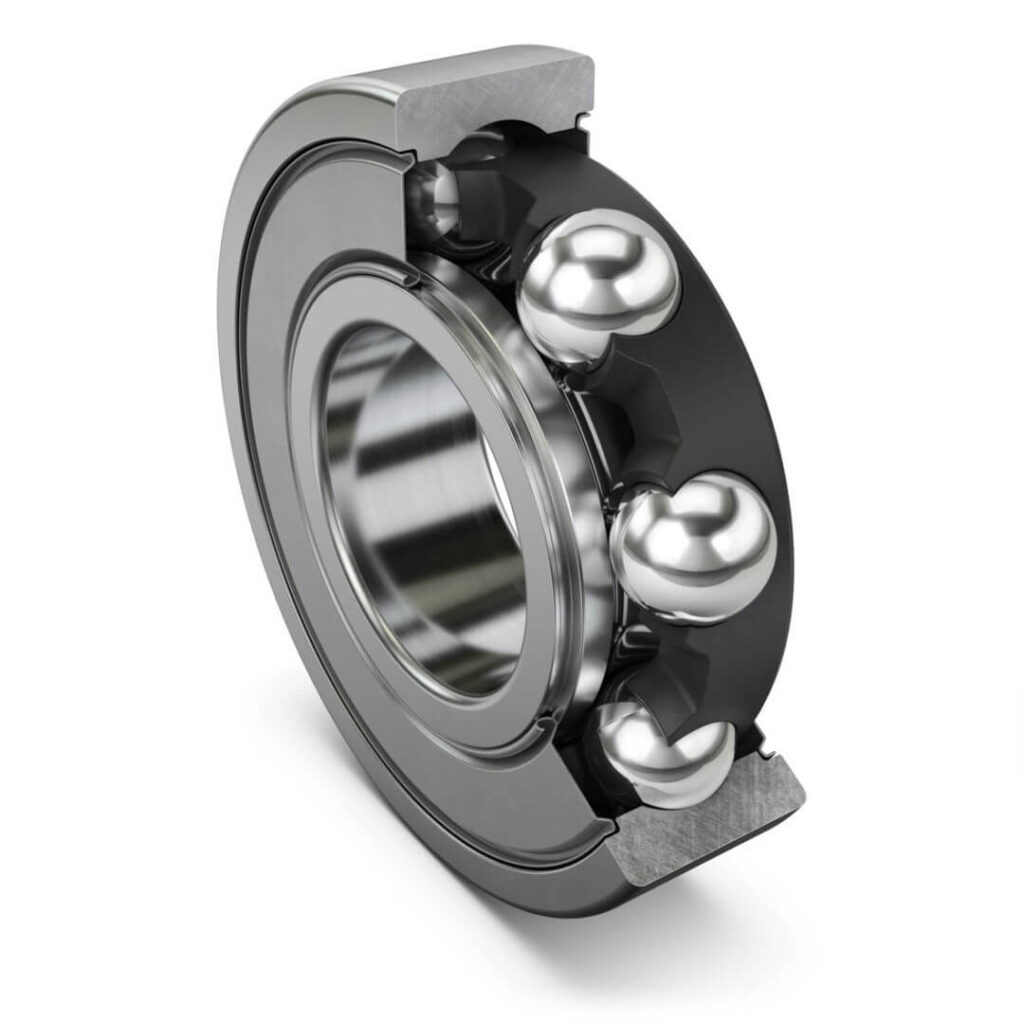Basically, bearings are important components in most of the mechanical systems used in vehicle engines, industrial machinery, and even household appliances. They support loads and allow rotation, thus offering very smooth operations with reduced friction. Bearing failure is quite a common phenomenon that can cause big disruptions in operation and result in very costly repairs. This comprehensive guide discusses the common causes of bearing failure, practical solutions to prevent it, and the importance of high-quality components insightfully contributed by reputed leading manufacturers like Aashapuri Engineering Pvt Ltd.

Common Causes of Bearing Failure
Identifying the root causes of bearing failure is imperative in developing strategies towards its prevention. We look at some of the most common causes of bearing failure and actionable solutions to address each issue below.
1. Lubrication Issues
Among the most critical ways that friction and wear can be reduced in bearings is through lubrication. Different problems with lubrication often have an extensive effect on performance and may degrade the lifespan of bearings. Major issues involving lubrication are highlighted as:
- Inadequate Lubricant: When bearings are under-lubricated, this means that a greater amount of friction and heat generated from friction can occur. The extra friction can increase wear, leading to early failure. Most cases of inadequate lubrication relate to disregard for maintenance schedules or improper procedures at application.
- Contaminated Lubricant: More often than not, lubricants are prone to contamination from dirt, water, or chemicals that can lead to abrasive wear or corrosion. Contaminated lubricants lower the bearing capability in the reduction of friction and protection.
- Over-Lubrication: This may sound a little ironic, but even too much lubricant is a problem. Over-lubrication may cause increased friction, higher operational temperatures, and is sure to lead to eventual failure.
Solution: To alleviate lubrication problems, institute a regular maintenance program to check and replenish supplies of lubricant. Premium-quality lubricant should be compatible with your bearing’s demands and free from contamination. If necessary, automatic lubrication systems should be installed to maintain favorable levels and conditions.
2. Misalignment
Misalignment occurs when the shaft or the bearing housing is not properly aligned. The result is uneven loading in the bearing because of the extra impetus that contributes to early failure. Misalignment may be a consequence of inappropriate mounting conditions, general wear on parts, and even changeable operating conditions.
Solution: Periodically align the shafts and bearings by using precision alignment tools. Provide good installation practices that maintain alignment. Misalignment problems can be prevented by periodic inspections with maintenance of alignment.
3. Overloading
Overloading occurs when a bearing has to bear a load beyond its capacity. This may be due to incorrect calculation of loads, unexpected operating conditions, or sudden variations in load. Overloading, in general, can put additional stress on the bearing, which can reduce its life and even cause failure.
Solution: Calculate any load conditions with care and closely monitor those that are obtained in service to prevent bearing overloading. Select bearings according to adequate load ratings. Account for overloading when designing machinery or during operation. Implement load monitoring to predict when overload may be a problem.
4. Contamination
Contamination-with dirt, dust, water, and even chemicals-can leak into bearings and cause serious damage. Besides abrasive wear, these contaminants can give rise to corrosion or loss of effectiveness in lubrication. Most times, this may happen with improper seals or housing damage.
Solution: Only high-quality seals must be used and correctly installed in order to prevent the entry of contaminants. Keep the bearing housing and its surroundings cleaned regularly for reducing contamination. With an effective sealing solution together with good housekeeping, contamination risks can be minimized to a large extent.
5. Incorrect Installation
Poor installation of bearings leads to surface damage, misalignment, and incorrect distribution of loads, among other adverse effects. This may be brought about by poor handling, bad fitting procedures, or improper use of tools.
Solution: Installation procedures should be carried out with regard to the manufacturer’s instructions and best practices. Proper tools and techniques should be employed in the installation of the bearings. Proper training and installation to set standards will help avoid problems arising from improper installation.
6. Vibration and Shock Loads
Excessive vibration or shock loading can result in the fatigue of bearings. It could be due to unbalanced loads, improper handling of the bearing, or due to sudden impact. Thus, these factors may result in premature failures and reduction in service life.
Solution: Eliminate sources of vibration and shock loads in your machinery. Use vibration analysis tools to identify and correct imbalances or other problems that lead to excessive vibrations; use proper handling techniques to cushion bearings from sudden impact forces.
7. Fatigue Failure
Bearing fatigue, with time, is the cyclic stresses causing surface degradation by the appearance of cracks. Usually, such failure can be attributed to normal wear and tear; however, it can also be hastened with improper handling or operational conditions coupled with inadequate maintenance.
Solution: Choose bearings suitable for your application with sufficient fatigue life. Moreover, check the bearings for fatigue signs routinely and take prompt actions if any damage is noticed. The lifespan of bearings can be extended by the following preventive maintenance as well as condition monitoring.
Prevention and Best Practices
In order to avoid failure and extend the lifespan of your bearings, follow the following best practices and preventive measures:
1. Periodical Maintenance
A regular maintenance schedule can help prevent failures from occurring by finding and correcting potential problems before they result in failure. Recommended regular maintenance includes the following:
- Lubrication Checks: Regularly inspect and replace lubricant. Keep the lubricants clean of contaminants and within specifications for your bearings.
- Alignment Checks: Regularly inspect and adjust shaft and bearing alignment to prevent misalignment and related problems.
- Seal and Housing Inspections: Inspect the seals and bearing housings for any wear or damage. Replace or repair the components of necessity to maintain protection and performance.
2. Use Quality Components
Investment in quality bearings and other related components from reputable manufacturers goes a long way in reducing the failure rate. Quality components, made by specific standards in performance, offer:
- Improved Reliability: Quality parts are less likely to fail under normal conditions of operation; thus, the general improvement of reliability is increased. The components’ quality can elongate their life; hence, it reduces frequent replacements and repairs.
- Optimal Performance: With reliable components, bearings can work at the top level to minimize friction and further wear.
3. Proper Handling and Storage
Proper handling and storage of bearings are very necessary to avoid damage and performance loss:
- Handle with Care: Dropping or hitting bearings will damage the surfaces and affect the performance of the bearings.
- Clean Environment: The bearings must be kept in a clean, dry location without any exposure to dust, moisture, or other contaminants that could enter the package.
- Proper Packaging: Good packaging materials should be used in handling and storing bearings.
2.4. Operating Condition Monitoring
The operating conditions shall be checked regularly for early detection and removal of any problems. Operating conditions may be monitored based on:
- Temperature: Always check the operating temperatures and ascertain that they are within the recommended range of your bearings. In most cases, excessive temperatures have been the root cause of accelerated wear and failure.
- Load: Always monitor the state of load conditions so that the bearing does not bear excess loads or overloading.
- Vibration: Always apply vibration analysis tools; this indicates imbalance or misalignment that would eventually affect the performance of the bearing.
2.5. Training and Education
Proper training for personnel involved in the installation, maintenance, and operation of bearings would help avoid such errors, thus giving better longevity to the bearings. Training includes:
- Installation Procedures: Installation techniques and methods should be known to the personnel to avoid problems arising out of improper fitting or alignment.
- Maintenance Practices: Knowledge regarding good lubrication practices, inspection, and maintenance will contribute to the proper upkeep of the bearings.
- Troubleshooting: Training of personnel to identify and resolve common bearing problems like wear or contamination.
Summary
The consequences of bearing failure—such as heavy operational disruption, higher maintenance costs, and reduced machinery reliability—can be severe. However, by understanding the causes of failure, bearing performance and lifespan can be significantly improved through necessary precautions and corrective actions. The use of quality components supplied by reputed manufacturers, such as Aashapuri Engineering Pvt Ltd, forms the foundation of bearing reliability and efficiency.
Preventive measures against bearing failure involve periodic maintenance, proper handling, and the use of high-quality components. Staying updated on prevailing trends and ideas also helps in averting or addressing challenges to maintain peak machinery performance. Aashapuri Engineering Pvt Ltd is a trusted Centrifugal Bearing Plug Manufacturer in India and a leading Centrifugal Bearing Housing Manufacturer in India, providing top-rated bearing components like centrifugal bearing plugs, bearing housings, and bearing covers.
By adopting best practices and deploying advanced technologies, bearing failure can be made a rare occurrence, ensuring the long-term success and efficiency of mechanical systems. For more information about our top-quality bearing component solutions, contact Aashapuri Engineering Pvt Ltd today.

